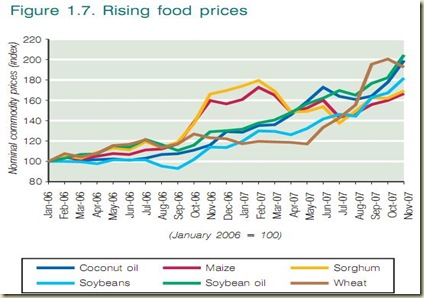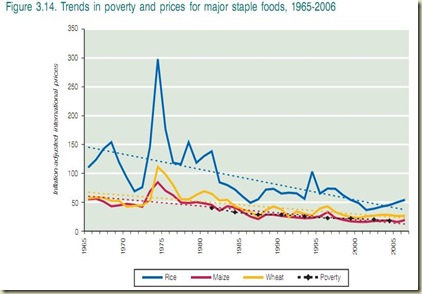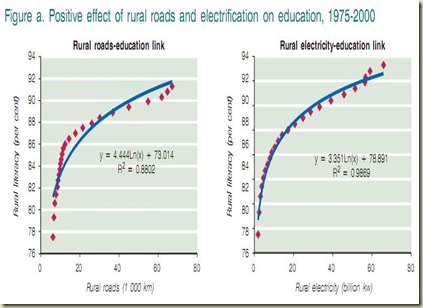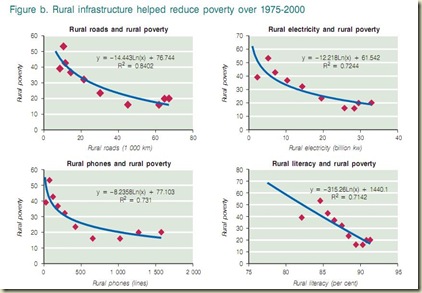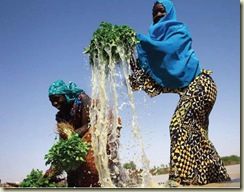The UN calls for greater government intervention to moderate the severe, unavoidable economic swings and inequalities brought about by increasing globalization. More here from the Washington Post:
Pointing to food riots in dozens of poor countries whipsawed by soaring prices for wheat and other staples, and to the rising income inequality that has become a too-common feature of economies in the developed world, the report says that no one is immune from the sometimes cruel consequences of global economic forces. But governments should do more, both individually and collectively, to protect people from their harshest impacts, it says.
The U.N.'s 2008 World Economic and Social Survey calls for greater regulation of international capital flows, more generous foreign aid and perhaps the guarantee of a minimum income to the world's poorest residents. Domestically, countries should do more to cushion their citizens against economic changes that have left them less secure. In poor countries, the insecurity can take the form of hunger and food shortages; in developed nations it often means stagnating wages and growing income inequality.
"Markets cannot be left to their own devices in respect of delivering appropriate and desired levels of economic security," the report says.
Global competition, which erodes the security of businesses, unstable capital flows, which crimp investment and growth, and food shortages are sometimes viewed as beyond the ability of governments to control. But the report says that is the wrong response. What is needed, it says, is "more active policy responses to help communities better manage these new risks."
The U.N. report calls for a range of interventions to provide support, including greater public investment in agriculture for poor countries and "a better balance of economic and social policies." It also said that even during economic booms governments should remain mindful of the downturns that can strike quickly, and set aside money to deal with them
Markets are good (probably the best system we can have) but we need to realize that it is imperfect and while it takes on the path to perfection, many more lives might be ruined if not intervened by the government or some other powerful bodies. Download the full report here (Sustaining Growth and Sharing Prosperity).
Some useful figures from the report:
